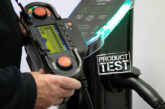
Pete (Monty) Monfort, Director of Arena Training Centre and Monty Electrics, shines a spotlight on the BPEC Solar Voltaic Systems course.
COP28 took place in Dubai in 2023 and saw close to 200 countries battling it out to agree on the wording for a global climate change deal. No doubt many readers will, like me, despair at the politicians as they chop and change on their promises and commitments, especially where it relates to the health of the environment.
Actions speak louder than words, however, and our industry has the capacity to make a difference at a grass roots level by implementing green technology solutions for homes and businesses.
Whilst there are growing numbers of society waking up to environmental issues and thinking about how their own actions can combat climate change, there are many more who might be convinced to adopt the technology from an entirely financial viewpoint. In particular, the cost of energy and the volatility of energy prices has forced many people to reconsider their options.
Either way, the solar industry is starting to see a new lease of life after it was all but killed off with the expiration of the ‘Feed In’ tariff scheme.
So how can you benefit from this refresh of the PV industry and why might you consider undertaking training such as the BPEC Solar Voltaic Systems course when you’re already qualified to install and commission electrical systems?
The BPEC Course addresses many of the issues outlined in the following paragraphs and will help prepare you for an area of electrical design and installation that has many pitfalls for the unprepared.
Competence
Whilst solar differs little from any other electrical work in that you’re required to design, install and inspect, according to BS 7671 Photovoltaic Installations are classed as a special location. In fact, the technology has a full Code of Practice – Grid Connected Solar Photo Voltaic Systems – written by the IET (ISBN 1839537515) and installers will need to familiarise themselves with regulations relating to circuit protection, connection methods, earthing, bonding, system design, and circuit protection to name but a few.
Health & Safety
Installation involves working at height and some electricians will need training to understand the risks of working on scaffolding and lifting methods for carrying equipment on to roof spaces.
PV systems also utilise DC current and there are risks that some electricians will not be familiar with the increased risk of arcing and differences in the way in which circuits are switched and isolated. Work is also carried out on live cables since PV panels are always generating when exposed to any source of light.
Design
There are lots of factors to consider when designing an effective system. Roof elevation, direction and location will impact on potential generation, while shading issues can greatly impact on the efficiency and may merit different systems or indeed may be entirely unsuitable.
Energy consumption patterns and loads will need to be considered and knowledge of different manufacturer requirements. PV systems also need equipment such as invertors to be located in suitable places and there are different requirements for volt drop, when compared to the norm.
Rules & Regulations
Installers must adhere to the law, rules and regulations relating to solar PV installations. You should be aware that installation of new electrical circuits requires notification to building control. In most cases planning permission isn’t required but there are exceptions.
Additionally, generator systems must comply with regulations relating to their connection to local supply systems and you may need to connect and notify (G98) or seek approval for larger systems (G99).
Certification by the Microgeneration Certification Scheme (MCS) can benefit installers since it provides customers with reassurance that you’re competent and will install quality equipment and that they won’t lose out on any financial incentive schemes.
Structural knowledge
Installation of PV equipment can add significant loads to roof systems. While the panels themselves are not particularly heavy they can act like sails in the wind and, as such, structures must be assessed for their strength.
You may choose to learn how to carry out your own structural surveys or you may wish to work alongside a registered engineer to assist you.
Likewise, the panels bolt to the roof and this involves lifting, moving and repairing tiles. This is another area that you may choose to become competent in or work alongside a roofing specialist.
Inspection & Testing
Installers will already be familiar with most of the techniques used for testing electrical circuits but solar systems remain live and thus the testing procedure must take account of the risks of working on live circuits whilst testing. Specialist testing equipment makes this easier and safer. Inspection of installed circuits is arguably even more important for DC systems due to the increased risk of arcing.
Solar is here to stay
In summary, solar PV systems are likely here to stay. Even if you’re not interested in becoming an installer, the likelihood is you will come across them in your everyday work moving forwards, so knowledge is key to ensuring your safety.
The BPEC Solar PV course was developed with the aim of providing electricians with the skills and knowledge required to install small scale PV systems. The course has been structured to meet the requirements of the National Occupational Standards and is recognised as a demonstration of competence for the Microgeneration Certification Scheme (MCS).
If you’re based around South Yorkshire, why not check out the facilities at Arena Training Centre in Sheffield.
Get more BPEC Solar Voltaic Systems course dates and details from Arena Training here
Read more industry feature articles here










